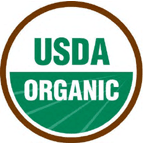It takes a great deal of study for scientists to understand the complexities and nuances of ecosystems and their keystone species, and there is still much work to be done. The important thing for us non-brainiacs to understand is the general concept of
keystone species, the need to protect them, and the fact that there are many keystone species that have yet to be identified by scientists.
It's also worth considering the related concept of general species interaction. Even when an ecosystem does not radically change upon decline or loss of a particular species, it does change to some degree. This is often a natural process of evolution. But when the species losses are caused by external factors, the changes to the ecosystem cannot be passed off as "natural." Unnatural causes of habitat and ecosystem change include:
external factors, the changes to the ecosystem cannot be passed off as "natural." Unnatural causes of habitat and ecosystem change include:
- overhunting, overfishing, or overharvesting;
- pollution;
- habitat encroachment from housing developments, agriculture, ranching, mining operations, or logging;
- invasion of non-native species (which are often introduced inadvertently via shipping or intentionally via illegal trade in exotic species);
- disappearance of predator species (which allows populations of prey species to explode);
- habitat change due to unnatural temperature changes in the environment (such as with global warming).
According to noted biologist E.O. Wilson, we are now seeing species extinctions at 1,000 times the normal rate, and there is no disagreement among biodiversity scientists that this is human-caused. How many of these lost species will turn out to have been keystone species? How much habitat change can our natural world withstand before a domino effect causes truly disastrous results?
 added official weight to organic as a highly desirable class of food. Organic food has been shown to have more nutritional content, and children who eat mostly organic diets have been shown to have significantly lower levels of pesticides in their bodies.
added official weight to organic as a highly desirable class of food. Organic food has been shown to have more nutritional content, and children who eat mostly organic diets have been shown to have significantly lower levels of pesticides in their bodies.



